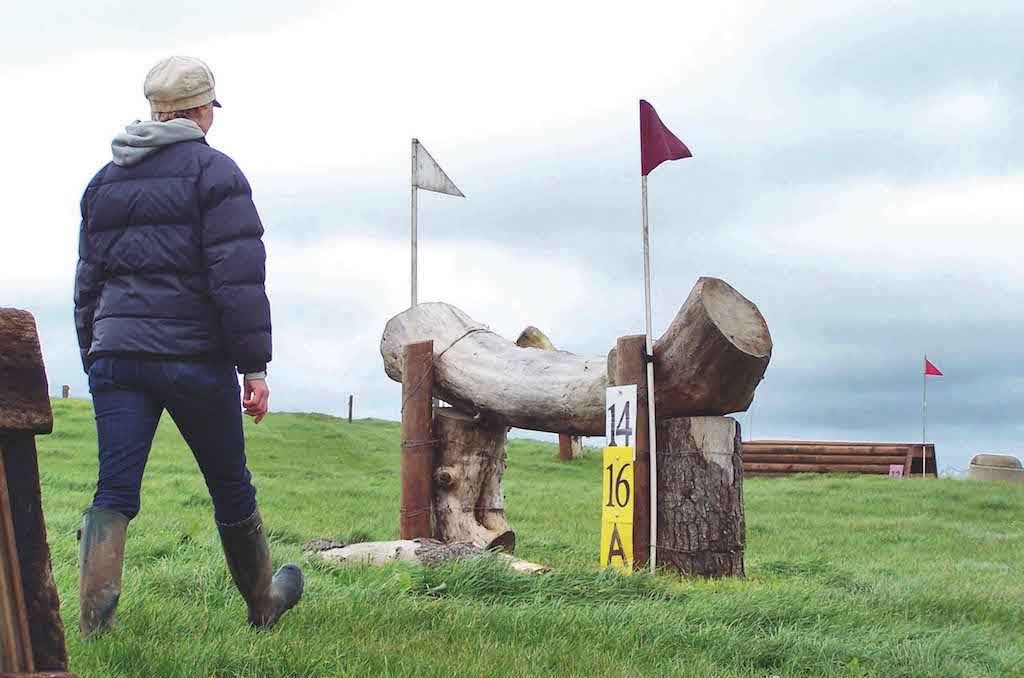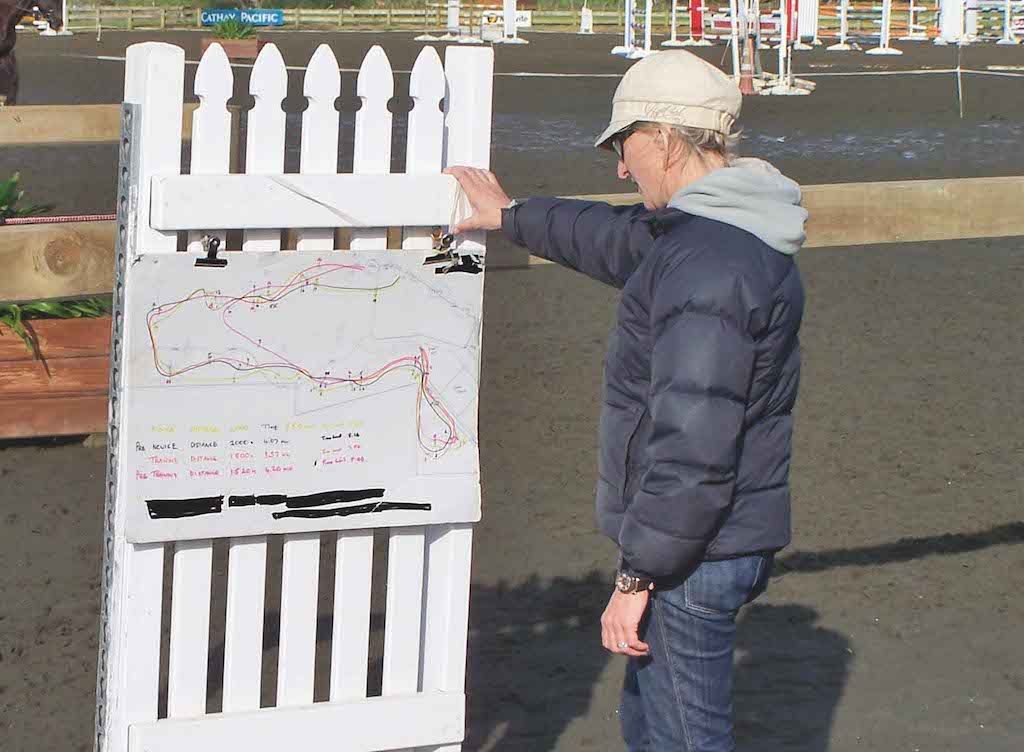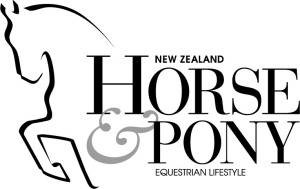
Walking the course should be much more than a stroll around chatting with your mates and admiring the scenery – it’s a time for careful observation and, above all, planning.
When you walk the course, you are not only checking out the fences and the direction you’ll need to take, and the terrain: you are also looking at the track on behalf of your horse, who will be seeing the obstacles for the first time right before he jumps them. You’ll need to know his individual quirks, strengths and weaknesses, as well as your own, when you’re formulating your plan of attack.
Horses for courses
Your first walk is when you will get your first impressions of the course, which will tell you what your horse will be thinking. If you come up to a fence and your first instinct is, “What the hell is that?” then your horse is going to give you the same sort of response.
Look at the footing as well, and the terrain. Any bumps and dips in the ground will affect how the fences jump, and therefore how they should be ridden. Try to avoid rutty and excessively deep ground when planning your route.

The first walk doesn’t need to be too thorough. Walk all the distances between combinations and the options, then go back to your truck or float and think about it. How experienced is your horse, and what kind of run do you want to have? If your horse was hot and strong on his last run, you don’t want to follow that up with another fast run – it should be more about getting him to have the right responses.
Bear in mind your horse’s stride length, as well as his experience, especially when it comes to combinations. If he’s brave and bold and kind, and has plenty of miles under his belt, you’ll plan quite a different ride in a combination than you would for a greener, spooky or less honest horse.


The second time you walk around is when you’ll be really particular about each fence and formulating a plan for every single line. But as someone once told me, set your plans in jelly! Always walk the options, even if you plan to take the straight routes, because anything can happen during your round. I once had to retire because my horse wouldn’t jump into the water, and I didn’t know the option.
Combinations are especially important to walk and re-walk. The approach is vital – make sure your horse can clearly see the elements. Work out whether you need to angle or curve your line, and walk the distance carefully so you know what kind of speed to come in. If it’s a short distance, you’ll need to sit up and rebalance early, and if it’s a forward distance you’re going to have to make sure you have a bigger and more positive stride, not one that’s flatter.

Obviously you don’t want to exhaust yourself at a one-day event by walking the course a dozen times, but if you do have the time it’s best to walk your track at least twice. Ideally, the first time would be with your trainer so you can get some professional advice from someone who knows you and your horse, and the second time would be on your own.
Schedule enough time so that you’re not in a hurry and can take as long as you need at each fence.
Be careful about walking around with your friends – not only will you not concentrate, but you’ll be pulled along at other people’s speed and you’ll receive conflicting advice. Plus, a lot of scare-mongering can go on.
At a three-day event, you’ll have more time, and the track will be longer. And for technical tracks where precision and accuracy are at a premium, you’ll need to walk the course more times. I walked the track at the Adelaide four-star five times! And at all three-days, I sit down afterwards and write a description of every single fence so I can really nut out how I am going to tackle each one.
The last thing to look for is the finish flags – you’d be surprised how often riders miss them and add unnecessary time penalties to their rounds! Make sure you know where they are so you can head straight there after the last fence.

Visualisation
Ideally, you want to be able to run through the entire course in your head, knowing exactly what fences you are going to meet, how you are going to approach them, what sort of canter you are going to want at each point in the track, where the hills are, and so on. It makes such a huge difference when you come to ride – when you actually get there it feels as though time is going slower and you have more time to react. If you are not organised, your brain fries and everything feels like it’s happening too fast.
Don’t be scared to ask for help
The rider’s representative is just that – there to represent the riders. They have been put in that role because they are approachable, experienced people, so don’t be afraid to seek them out if you have any concerns about a specific fence. You might think you’re being a wuss, but chances are you won’t be the only one. If a number of riders are concerned about a fence, the rider’s rep may approach the TD on their behalf, and request an option be added, for example. Or, the rider’s rep may offer to walk that fence with you, and offer some advice.
Before I set off cross-country, I had visualised how I was going to ride every inch of the track. By the time I got on my horse, I was confident I had done my preparation at home, my horse was fit and ready, I’d walked the course carefully and had chosen my route wisely, and mentally I was in the right zone – so all I’d got to do is kick on and enjoy it!

Kirstin on…
Happy feet
Make sure you have the right gear on before you set off on your course walk. Riding boots weren’t made for walking! If the weather is changeable, don’t forget a raincoat. Wear a hat, and take a bottle of water because the first sign of dehydration is a loss of concentration. And don’t forget your sunblock!
Being nervous
Being nervous is totally fine – everybody feels nervous! But you need to make sure you react in a positive manner. If fear makes you weak and jelly-like, you need to give yourself a mental kick in the head and snap into a positive frame of mind. If you are scared of a particular fence, remember that horses are very suggestible. It all comes down to belief and trust. If you don’t believe you can do it, the horse will pick up on it. So again, you have to be in the right space mentally. Think back to something you have jumped successfully in the past – something that has challenged you – to get your head on the right track.
If a particular fence is concerning you, don’t hang around and watch dozens of riders tackle it. Pick out a couple of good riders to watch. Most cross-country riding scares the hell out of me, so why scare the hell out of yourself watching some absolute moron come down and miss? Watch a professional, and hopefully they will jump it well.
Schooling
People don’t school cross-country enough. It makes me cringe when I hear people boasting at a competition that their horse has “just come off the track and hasn’t even seen a cross-country fence yet”. You don’t compete to train your horse – you compete to make sure everything is installed the right way, so you can go up the grades without wearing your horse’s legs off.
My green horses go cross-country schooling heaps before their first outing, and I do a lot of schooling at Pre-Novice and Novice height so I can test their responses and know their reactions. That way, when I get to a show I know I have done my homework. If I come across a bigger trakehner, say, than I have jumped before, as long as I know my horses understand the concept of the fence then 10cm or so higher doesn’t make any difference.
Rider fitness
It makes me so cross to hear riders heaving louder than their horses after cross-country. It’s meant to be a sport, so a basic level of fitness is imperative. If you’re unfit, it’s really unfair to your horse. Horses are so generous and do so much for us – it’s important we don’t abuse it. Generally, if you ride only one horse a day you are not going to be fit enough from riding alone, so you’ll need to run, cycle or do something else to increase your own fitness.








